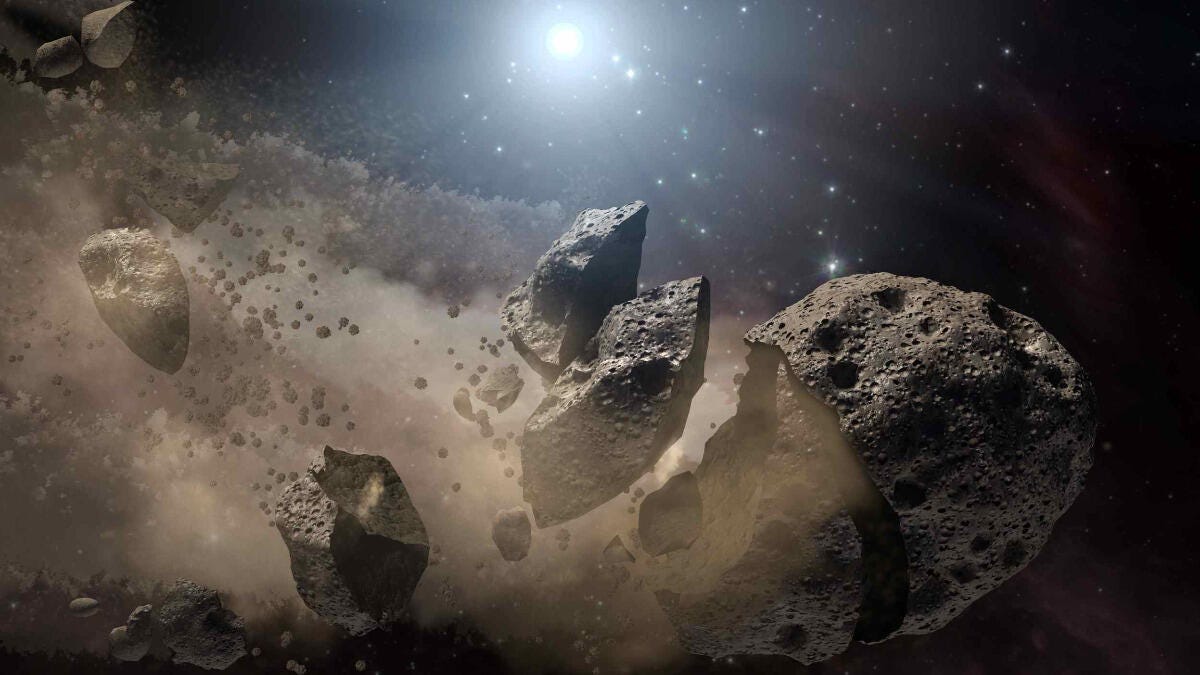Crumbling Comet Could Create New Meteor Shower and an Epic Outburst Tonight
Plan to head outside on the night of May 30, when we could see the birth of a brand new meteor shower called the tau Herculids.

The remains of a disintegrating comet could spawn a newborn meteor shower.
Astronomers say there's a chance fragments of a comet could spark a flurry of shooting stars and fireballs Monday night and early Tuesday morning.
On the evening of May 30 into the morning of May 31, it's possible we'll see the birth of a new meteor shower called the tau Herculids. And there's a small chance it will even erupt into a dramatic outburst or historic meteor storm skywatchers will talk about for years to come.
But there's also a chance most people will see very little action as happened with the forecast meteor event of May 15 that never really materialized. What is for sure is that our planet is about to cross the orbit of a comet named 73P/Schwassmann-Wachmann (also known as SW3) that's been in the process of falling apart since at least 1995. That's when astronomers spotted the comet's nucleus split apart into four smaller chunks as it unexpectedly brightened by multiple orders of magnitude.
Over the past quarter century the comet has continued to crack up even further, into literally dozens of smaller chunks and countless tiny bits of debris, dust and detritus.
While the loose remains of the comet itself will be nowhere near Earth next week as we pass over its orbital path around the sun, it's expected substantial clouds of the dross from its disintegration will quite literally collide with our planet. Many of these individual bits will burn up as they slam into our upper atmosphere, with the smaller motes creating faint shooting stars and the bigger pebbles perhaps exploding into slow-moving fireballs that light up the night for several seconds.
This event is a bit like the skywatching equivalent of buying a lottery ticket: The odds you'll win/see something amazing aren't great, but if we do happen to hit the jackpot and get a bona fide meteor storm with hundreds of meteors visible over a period of less than an hour, it will be something to remember for a lifetime. And, of course, there's also a chance we'll see something in the form of a more typical meteor shower, but just not the big grand prize historic storm.
"There's huge uncertainties here," astronomer Ye Quanzhi said on YouTube. "We know that something is going to happen, but we don't know the outcome... Is it going to be the big show or is it close to nothing?"
According to the American Meteor Society, the ideal time to head outside and look for the tau Herculids is Monday evening from 9:45 p.m. PT to 10:17 p.m. PT.
The tau Herculids are ramping up! The #globalmeteornetwork observed a total of 1500 so far. However, the activity remains low, the ZHR at the end of the night on the US west coast was only 1-2.@IMOmeteors @amsmeteors #tauherculids2022 pic.twitter.com/6crP6xyPf9
— Denis Vida (@meteordoc) May 30, 2022
"The southwestern USA and Mexico are favored locations as the radiant, the area of the sky where these meteors come from, will be located highest in a dark sky," Robert Lunsford wrote for AMS. "The outburst may be seen from southeastern Canada and the remainder of the (eastern) USA, but at a lower altitude."
To check out the show, make plans to head outside at a location as far away from light pollution as possible. Fortunately, the moon will cooperate by virtually staying dark all night long. Head outside at least 15 minutes before the aforementioned window to give your eyes time to adjust. Then lay back on the ground or a lounge chair with as a broad a view of the sky as possible and just watch.
For the best experience, orient yourself with the Big Dipper (Ursa Major) in your view. The meteors will appear to emanate outward from a point in the sky just to the left of the dipper's handle.
Here's hoping we all win that lottery ticket and have a once-in-a-lifetime experience. Let me know how it goes @EricCMack on Twitter.

